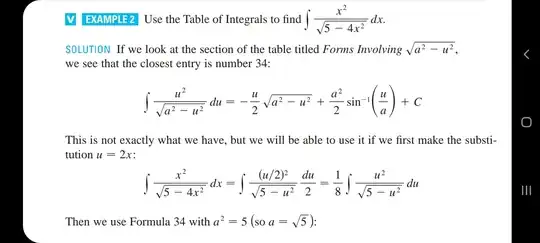Hello we all know that $$\sqrt {a^2}=|a|$$ so when we have $$a^2=5$$ that is $$|a|=\sqrt5$$ and $$a=\pm\sqrt5$$ but i very often see that when solving integrals only the positive value is usually considered, for eg.
Here in this example since $$a^2=5$$ that means$$a=\pm\sqrt5$$ but the book considers only the positive value why?
